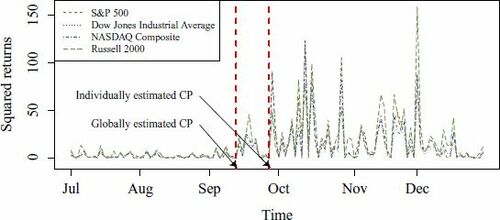Figures & data
Table 1 A summary of the robust estimators introduced in Section 2.4, where AC, CV, J, W, and WZ represent estimators proposed in Altissimoa and Corradic (Citation2003), Crainiceanu and Vogelsang (Citation2007), Jirak (Citation2015), Wu (Citation2004), and Wu and Zhao (Citation2007), respectively.
Table 2 Summary of the statistical meanings of p, q, P and their associated quantities.
Fig. 1 (a) A typical realization of the time series with the mean function defined in (21). (b) The density functions of and
when n = 400. The true value is Σ = 9.
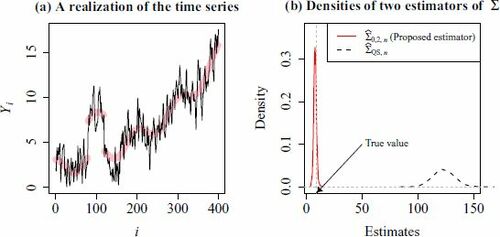
Fig. 2 The values of and
are plotted against n, where
denotes the MSE when the jump size ξ = 0, and
denotes the standard deviation of the MSEs across different ξ. Recall that smaller
and smaller
imply higher efficiency and robustness, respectively. Note that
is computed only when
because it requires a computationally intensive cross-validation step. Note that horizontal axis is plotted in the logarithmic scale for better visualization.
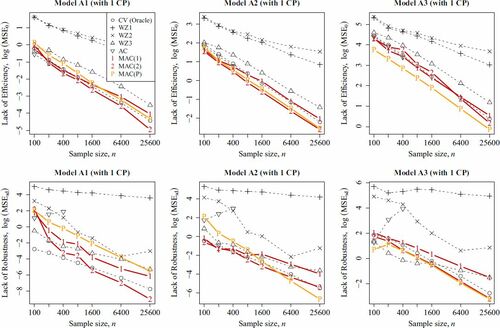
Fig. 3 Thin solid line: A realization of in Model A2 of length n = 400. Thick solid line: The nonconstant mean function
in Section 5.2. Dotted vertical lines: The change points.

Fig. 4 The values of of different estimators are plotted against the sample size n in Models A1–A3. Here the mean function consists of nonconstant trends and multiple jumps (see Section 5.2 and ). Note that horizontal axis is plotted in the logarithmic scale.

Fig. 5 The values of for
,
,
and
in the heteroscedastic case are plotted against n, where
is used, and
is defined in (16). The left and right plots show the results in the constant mean and nonconstant mean cases, respectively. Note that the horizontal axes are plotted in the logarithmic scale.
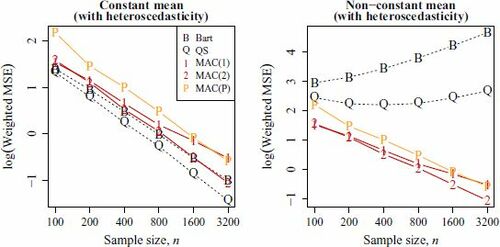
Fig. 6 The powers of the CP tests defined in Section 5.4 are plotted against the jump magnitude ξ under Model B2. The scenarios under well-specified alternative H1 and misspecified alternative are shown in the upper and lower plots, respectively. Dashed horizontal lines indicate the significance level
and zero. Note that horizontal axis is plotted in the logarithmic scale for better visualization.
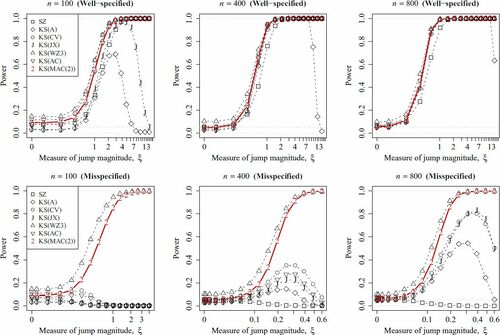
Fig. 7 Time series plot of , that is, the daily S&P 500 Index (3 January 2006–30 December 2011) in the log scale (see Section 6.1). The vertical dotted line indicates the value of
estimated by the statistic in Wu and Zhao (Citation2007). Here
is estimated by MAC(2).

Fig. 8 The squared returns of four stock indices (1 July 2008–30 December 2008) (see Section 6.2). The two vertical lines denote the CP locations. The earlier and later CPs are detected by the multivariate and univariate CUSUM CP estimators, respectively.
